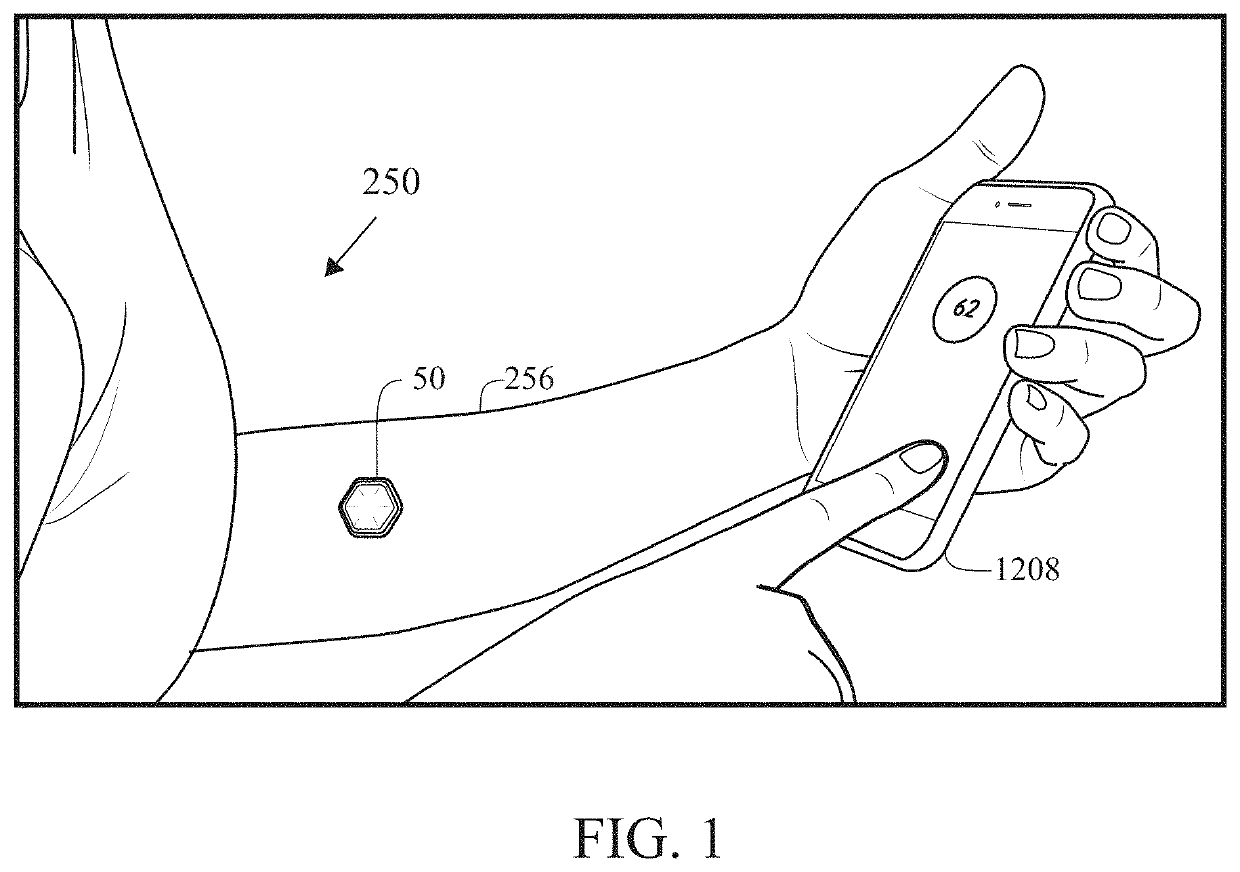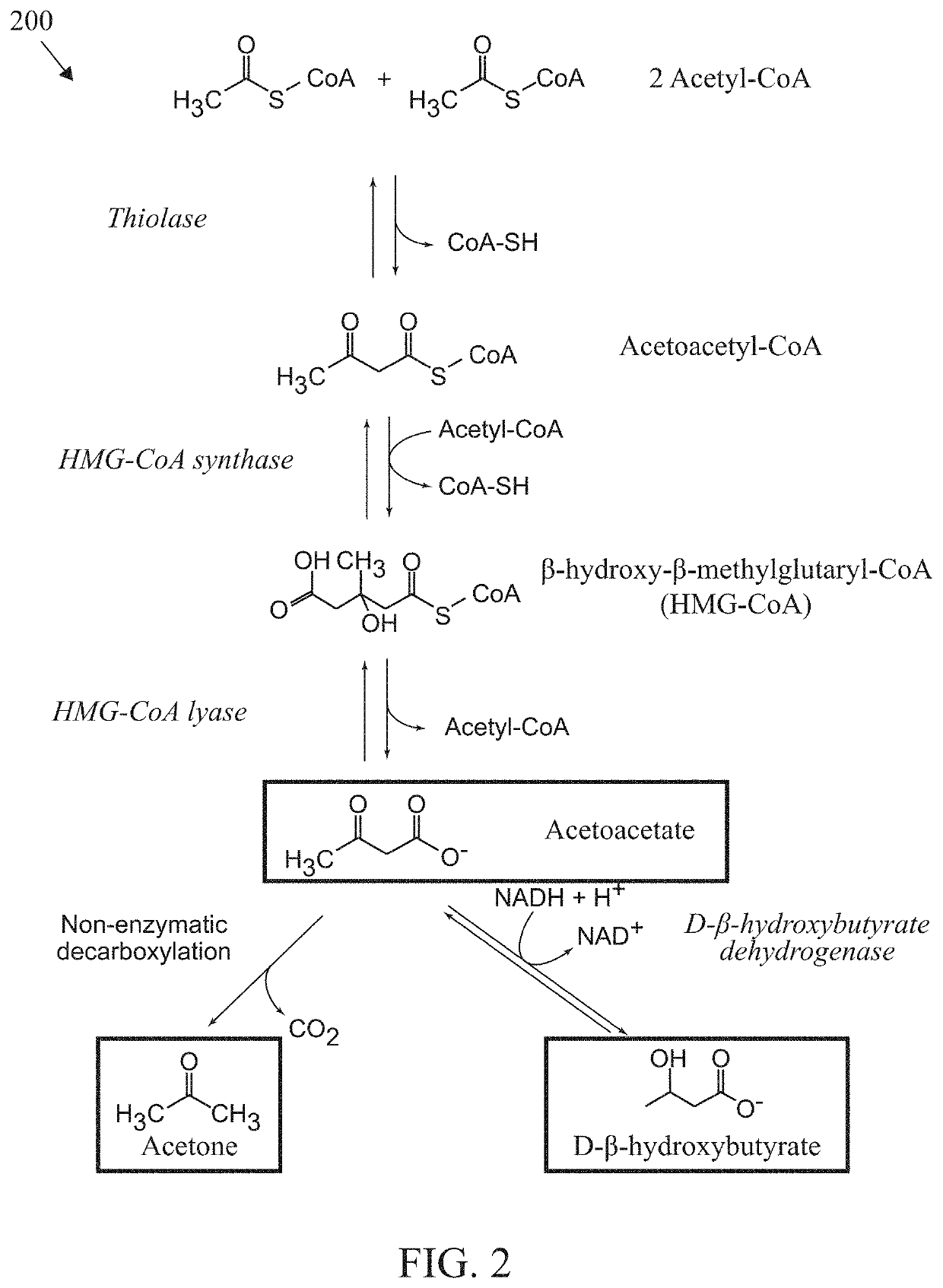Devices And Methods For The Generation Of Alerts Due To Rising Levels Of Circulating Ketone Bodies In Physiological Fluids
a technology of circulating ketone and alerts, which is applied in the field of devices and methods for the generation of alerts due to rising levels of circulating ketone bodies in physiological fluids, can solve problems such as potentially life-threatening conditions, diabetic ketoacidosis, and dramatic rise in circulating ketone body levels
- Summary
- Abstract
- Description
- Claims
- Application Information
AI Technical Summary
Benefits of technology
Problems solved by technology
Method used
Image
Examples
Embodiment Construction
[0050]In healthy individuals, circulating ketone levels are typically well below 0.5 milli-mol (“mM”). Slightly elevated ketone levels (i.e. between 0.5 and 1 mM) are typically a sign of ketosis, usually as a consequence of fasting or low-carbohydrate diets as the liver scavenges its fat reserves for energy. Healthy individuals are very rarely at risk for ketoacidosis (>1 mM, thereby causing acidification of the blood due to highly elevated levels of ketone bodies). The absence of insulin, which otherwise enables glucose to enter the cells to provide them with energy, causes the body to scavenge energy from free fatty acids in the liver, giving rise to excessive generation of ketone bodies and subsequent acidification of the blood, thereby disrupting acid / base homeostasis. Diabetic ketoacidosis (DKA) is a life-threatening metabolic complication of diabetes with a mortality rate of 2-10%. DKA usually manifested through extended periods of hyperglycemia and overall poor glycemic manag...
PUM
 Login to View More
Login to View More Abstract
Description
Claims
Application Information
 Login to View More
Login to View More - R&D
- Intellectual Property
- Life Sciences
- Materials
- Tech Scout
- Unparalleled Data Quality
- Higher Quality Content
- 60% Fewer Hallucinations
Browse by: Latest US Patents, China's latest patents, Technical Efficacy Thesaurus, Application Domain, Technology Topic, Popular Technical Reports.
© 2025 PatSnap. All rights reserved.Legal|Privacy policy|Modern Slavery Act Transparency Statement|Sitemap|About US| Contact US: help@patsnap.com



